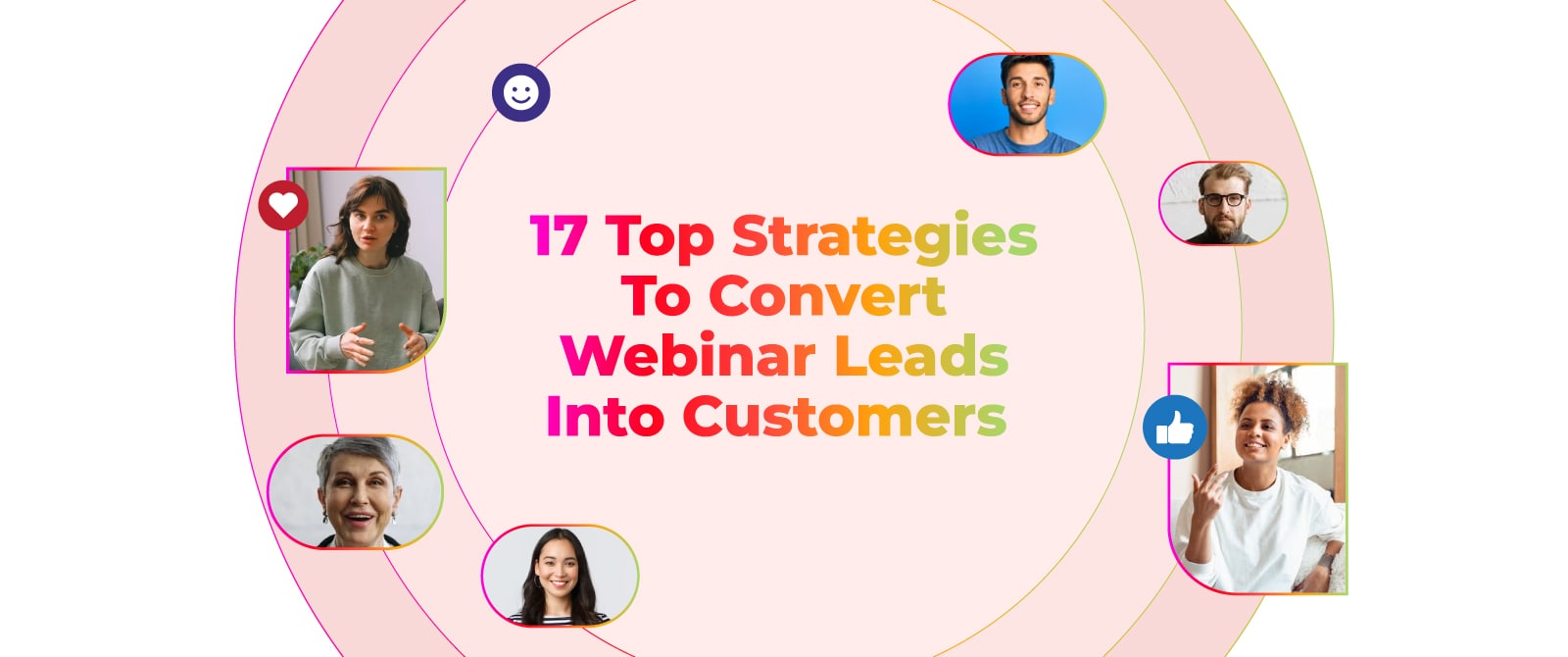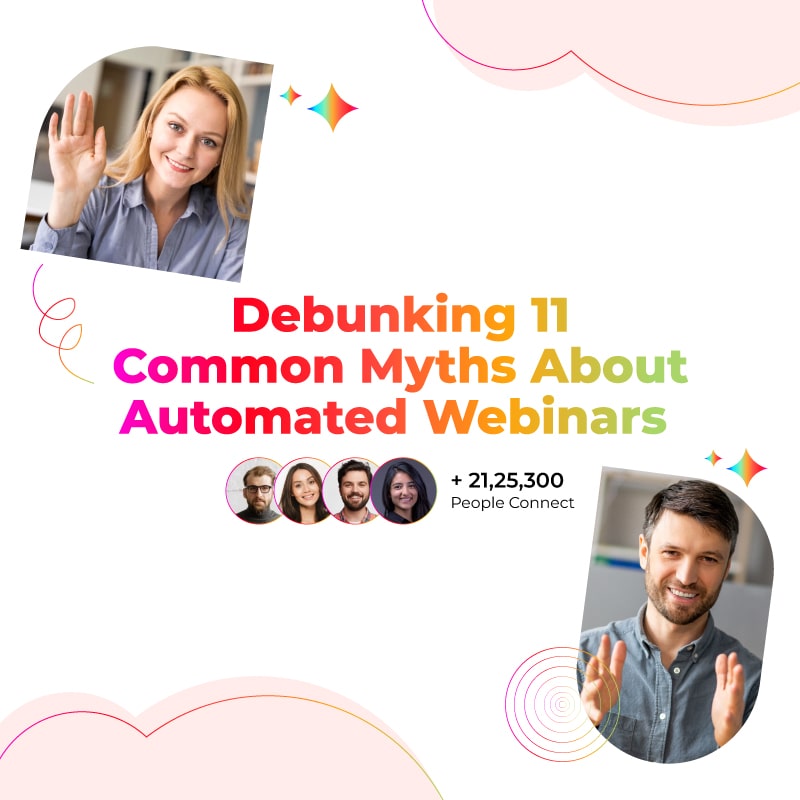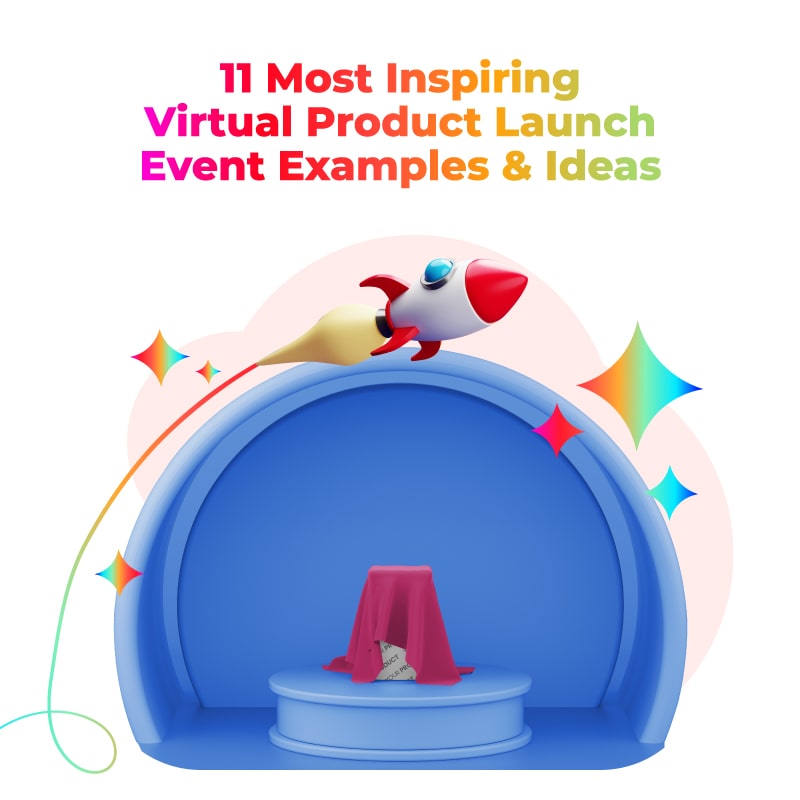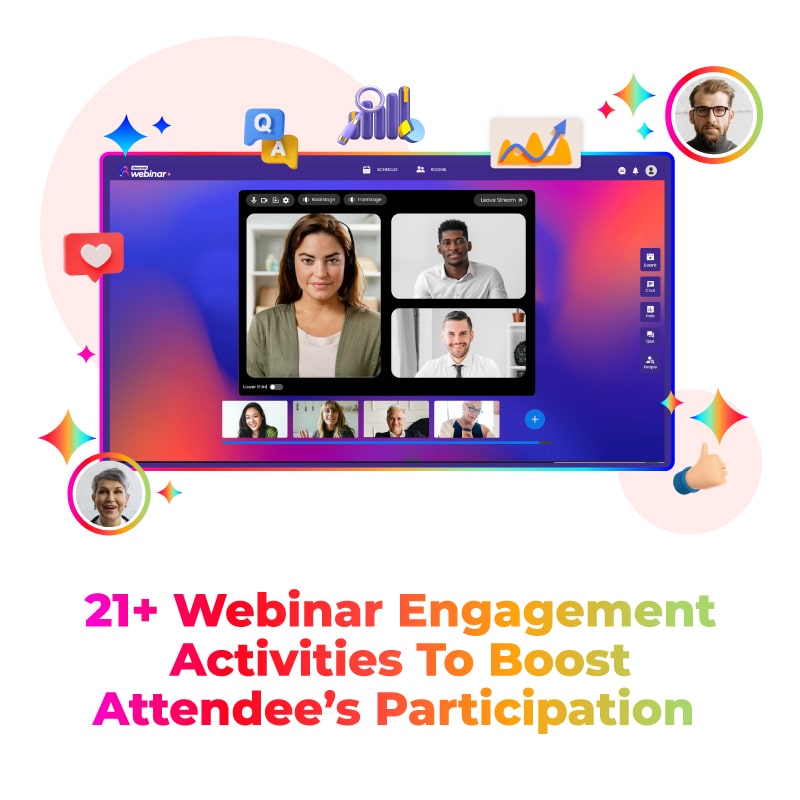Webinars have evolved as a significant tool for interacting with potential consumers and increasing webinar conversions in the ever-changing environment of digital marketing. They give a one-of-a-kind platform for businesses to display their expertise, deliver value to their audience, and eventually convert webinar leads into loyal customers. According to the research, 73% of B2B marketers and sales executives believe webinars are the best method to generate high-quality leads. In this article, we’ll look at what webinars are, how effective they are, and, most importantly, 17 top strategies to convert webinar leads into customers.
What exactly is a webinar?
A webinar, an abbreviation for “web seminar,” is an online event that allows presenters to exchange information, conduct training sessions, or interact with an audience in real time through web conferencing technology. In addition, webinars might be presentations, seminars, panel discussions, or Q&A sessions, often presented on specific virtual event platforms.
Do Webinars Really Work?
Before delving into the tactics, it’s critical to first determine the efficiency of webinars in terms of lead conversion. The answer is unequivocally “yes.” Webinars have shown to be extremely beneficial for a variety of reasons, including:
- Engagement: Webinars engage users by providing an interactive and immersive experience that keeps their attention and encourages active involvement.
- Education: They provide a forum for teaching your target audience about your goods or services, industry trends, and answers to their problem areas.
- Lead Generation: Because webinars frequently draw a qualified audience that is truly interested in your issue, they are great for lead generation. In addition, most businesses use different webinar lead nurturing strategies to increase ROI.
- Building Trust: Webinars help develop trust with your audience by giving excellent material and demonstrating your expertise, which is a vital aspect to increase webinar conversions.
How to Convert Webinar Leads into Customers
Now, let’s delve into the 17 top strategies to convert webinar leads into customers:
1. Segment Your Audience:
Want to convert webinar leads into customers? If yes, understand your audience and segment them into groups. One of the most important aspects of converting leads through webinars is audience segmentation. You may design your webinar material to be more relevant and engaging for each segment by categorizing your possible guests into various groups based on demographics, interests, and pain concerns. for example, what appeals to a small company owner, may not appeal to a marketing professional. In addition, this method guarantees that you are targeting your audience’s individual wants and interests, increasing their likelihood of engaging with your content and considering your services. By segmenting your audience, you can send personalized invites and messaging, boosting the likelihood of attracting the correct participants to your webinar.
2. Write Captivating Titles and Descriptions:
The title and description of your webinar are crucial to its success. These aspects should not only correctly portray the topic, but should also pique the interest of potential attendees. Most businesses use this webinar lead nurturing strategy to attract the audience and generate leads. Creating an engaging title that clearly reflects the value that attendees will acquire from your webinar is critical. Your description should give readers a taste of what to expect and pique their interest or enthusiasm. Use appealing wording that promotes the advantages of attending the webinar. Additionally, these parts serve as the marketing pitch for your webinar, encouraging your target audience to register and attend.
3. Use Email Marketing:
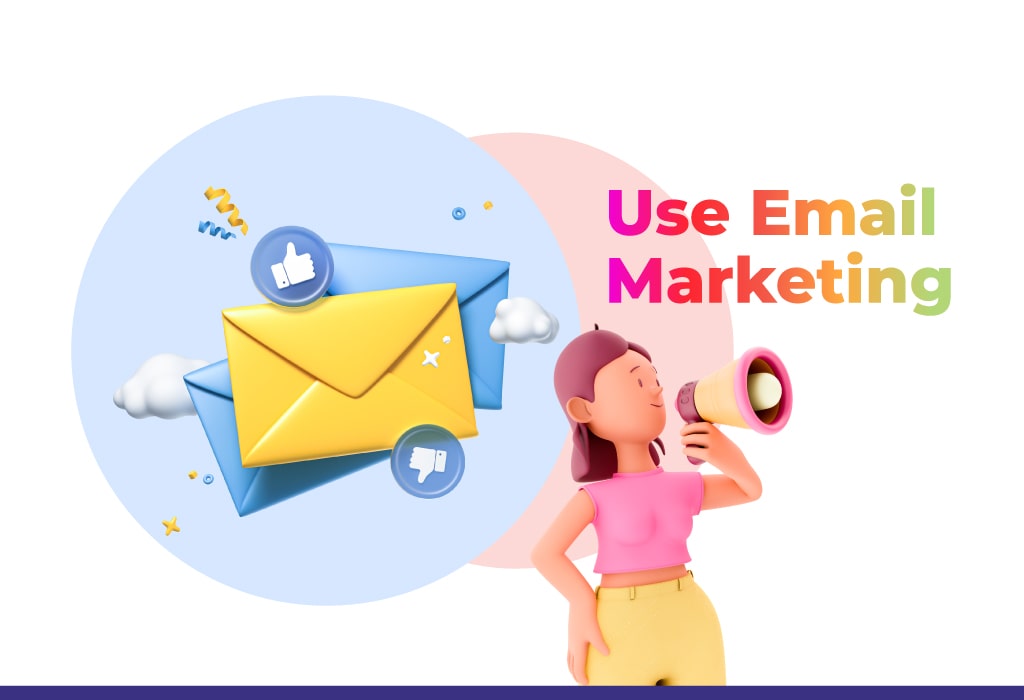
Email marketing is a great way to promote your webinar and convert webinar leads into customers. Building anticipation is essential, and you may do it by sending a series of well-timed emails in the build-up to the event. Begin with an announcement email to introduce the webinar, then follow it up with reminder emails as the day approaches. Include aesthetically appealing email templates with a clear call to action that makes it easy for recipients to register. Continue engagement after the webinar with post-webinar follow-up emails that give further content, such as presentation slides or links to the recorded webinar. This constant contact keeps your brand at the forefront of people’s minds and increases webinar conversions.
4. Provide Useful Content:
Attending webinars is an excellent way for individuals to acquire useful insights and answers to their challenges. It is critical that your webinar material meets this expectation in order to turn leads into customers. Providing useful and informative content during the webinar can also help you convert webinar leads into customers
Spend time researching and preparing your content to ensure it is well-informed, practical, and solves major pain areas in your business. Include real-world examples, case studies, and concrete advice. In addition, a well-structured presentation that takes listeners on a learning trip will not only keep them engaged during the webinar but will also establish you as a trusted authority in your industry, improving the probability of conversion.
5. Participate in Polls and Surveys:
Interactivity is a key component of effective webinars. Including polls and surveys in your presentation may increase participation and give useful information. It can also help you to engage the audience and convert webinar leads into customers. Most webinar platforms such as Webinar Plus offer a wide range of engagement tools that can help you to hold and engage the audience.
Place polls strategically throughout the webinar to gather participants’ thoughts on pertinent topics. Share the findings in real time to keep guests interested and stimulate conversation. Following the webinar, send out questionnaires to gather feedback on the event’s content, presentation, and overall experience. The information gained may be used to guide future webinars and marketing initiatives, demonstrating your dedication to always developing and meeting the demands of your audience.
6. Use Q&A Sessions:

Using this webinar lead nurturing method can help you engage attendees, establish credibility, and address particular problems. Make time for questions and encourage attendees to submit them during the session. Answer these questions completely and intelligently, demonstrating your knowledge and eagerness to help. Engaging in direct interaction with your audience during a live Q&A builds a sense of connection and trust, making participants more responsive to your offerings and improving the likelihood of conversion. The average webinar conversion rate is 46%. This percentage varies depending on the type of webinar; as of 2023, the conversion rate for communication webinars is 67.05%.
7. Make unique Offers:
To increase lead conversions, try making unique incentives or bonuses available to webinar attendees. Make these offerings time-sensitive or available exclusively to those who engage to create a feeling of urgency. Make it clear what these incentives are worth and how they directly solve the difficulties or needs highlighted in the webinar. Include a strong call to action that instructs guests on how to take advantage of these exclusive incentives. You can increase webinar conversions by giving instant value and exhibiting a commitment to addressing their requirements.
8. Provide Replays:
Recognizing that not all registrants will be able to attend the live webinar, provide recorded versions (replays) to them. This webinar lead nurturing strategy broadens your reach and allows others who were unable to attend the live event to get the vital material. Ensure that the replay retains the same level of quality and interest as the original, including any interactive components like polls or Q&A sessions. To make the most of these replays, try putting them behind a registration form, which will allow you to collect contact information from individuals who want to view the recording. These replay registrants can then be cultivated further as part of your lead conversion process.
9. Create a Landing Page:
A landing page acts as the entry point to your webinar. It should be aesthetically beautiful and user-friendly, with the goal of converting guests into registrants. Use compelling language to highlight the benefits that registrants will obtain from attending your webinar. Include a brief signup form that requests only the necessary information while remaining painless. A clear call to action should direct visitors to register as soon as possible. A strong CTA can help you to convert webinar attendees into paying customers. To increase webinar conversions, eliminate distractions, and ensure that the landing page is exclusively focused on marketing your webinar.
10. Collaborate with Influencers:
If you want to convert webinar leads into customers, collaborating with industry influencers may greatly increase the reach and credibility of your webinar. These influencers have earned the confidence of their audience, making their support for your webinar crucial. Consider collaborating with an influencer to co-host the webinar or inviting them to promote it to their audience. This webinar lead nurturing strategy can expose your webinar to a larger, more interested audience, improving registrations and the possibility of lead conversion. When working with influencers, clear communication, and a mutually beneficial agreement are vital.
11. Use Social Media:
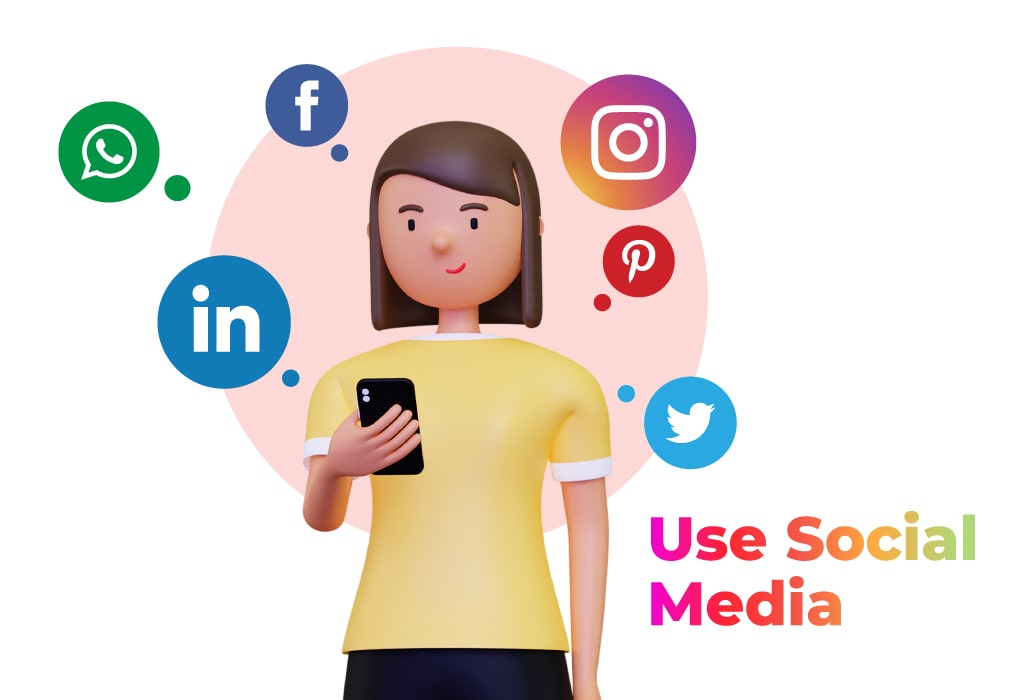
Social media channels are great for building enthusiasm and spreading the news about your webinar. Create teaser material, countdown postings, and compelling imagery that give participants a preview of what to anticipate. Create a distinct event hashtag to promote audience engagement and sharing. Maintain enthusiasm and develop a feeling of community around the webinar by actively engaging with comments and questions on your social media posts. You can attract more attendees and increase webinar conversions by harnessing the reach and interaction of social media.
12. Use graphics and Multimedia:
Use appealing graphics, multimedia components, and well-designed slides to enhance your webinar presentation and increase webinar conversions. Visual aids not only enhance the material but also assist in reinforcing important themes. Use photos, infographics, and videos to visually engage people and convey topics. To keep the webinar instructive and powerful, strike a balance between images and relevant material. Slides that are well-designed should complement your story and make it easier for attendees to follow up and remember information.
13. Follow Up with Personalized Emails:
Email communication after a webinar is critical for nurturing prospects and promoting conversion. Send personalized emails is one of the best strategies to convert leads. Begin by sending individual thank-you emails to participants, expressing appreciation for their attendance. Provide a quick overview of the major insights from the webinar in these emails to reaffirm the value they got. For non-attendees, underline the value of the webinar and give access to the replay. Personalization is essential here since it demonstrates that you appreciate each individual’s interaction and are committed to their ongoing conversion journey.
14. Use Retargeting Ads:
Some registrants may visit your webinar registration page but leave the process. Implement retargeting ad campaigns to re-engage these prospective attendees. You may display adverts that remind them of the webinar’s benefits and push them to complete their registration by tracking their online behavior. In order to convert webinar leads into customers, create ad creatives that speak to the precise pain areas or interests that drew them in the first place.
15. Share Testimonials and Success Stories:
Trust is essential in lead conversion. Customer testimonials and success stories are effective strategies for instilling trust in your audience. Share honest comments and stories about how your product or service addressed real issues or improved people’s lives. It is one of the best strategies to convert leads These anecdotes serve as social proof, illustrating the real-world value of your goods. Include these testimonials in your webinar to boost your reputation, and utilize them in post-webinar follow-up emails to increase trust.
16. Offer materials:
Providing downloadable materials linked to your webinar topic is an effective method to reinforce your expertise, add value to attendees, and convert webinar attendees into paying customers. These materials can be eBooks, whitepapers, checklists, or templates that go deeper into the topic of the webinar. Include clear calls to action within these resources, directing visitors to the next stages in their journey, which may include connecting with your business more or completing a purchase. By providing participants with useful information, you increase their sense of your authority and dedication to their achievement.
17. Monitor and Analyze Metrics:

Continuous improvement is essential for enhancing your webinar lead conversion process. Tracking and analyzing important data provides insights into the performance of your webinar and allows you to fine-tune your plan. Registration rate, attendance rate, engagement levels (e.g., participation in polls and Q&A sessions), and conversion rate (the proportion of attendees who execute desired activities) are all metrics to keep an eye on. You may find strengths and places for development by evaluating this data, allowing you to adapt future webinars for even greater outcomes. Continuous refining based on data-driven insights is critical to long-term webinar marketing success.
Final words:
When done correctly, webinars are a powerful tool for converting leads into customers. By using these 17 tactics, you may increase the impact of your webinar, engage your audience, and eventually convert interested prospects into devoted customers. Remember that giving value, encouraging participation, and creating trust throughout the process is the key to effective webinar lead conversion.
FAQs
The process of converting webinar participants or registrants into paying customers is referred to as webinar lead conversion. Leads are nurtured and guided through the sales funnel in order to eventually result in a purchase or other desired action.
It is crucial to convert webinar leads since it has an immediate influence on your revenue. Converting interested prospects into paying clients, helps you optimize the return on investment (ROI) of your webinar efforts, which may result in more sales and the expansion of your business.
There are several ways to turn webinar leads into paying clients, including audience segmentation, special incentives, useful content, email marketing, hosting replays, working with influencers, utilizing social media, and more. These tactics are designed to interact with, nurture, and develop leads’ trust.
Offering special incentives during the webinar, like as discounts or bonuses, may be a successful tactic to increase lead conversion. These rewards foster a sense of urgency and motivate participants to act right away. It’s crucial to check that these offerings complement the webinar’s subject matter and truly add value for attendees.
While working with influencers may greatly increase the visibility and credibility of your webinar, it’s not always necessary. Your industry and target market will determine this. If influencers have an audience that is interested in and relevant to the subject of your webinar, collaborating with them might be advantageous.


